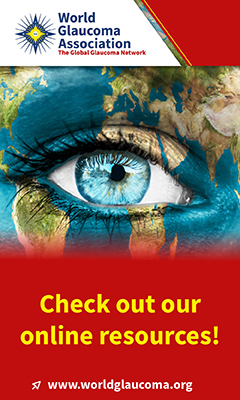advertisement

Chen S 22
Showing records 1 to 22 | Display all abstracts from Chen S72904 Anterior but not posterior choroid changed before and during Valsalva manoeuvre in healthy Chinese: a UBM and SS-OCT study
Li F
British Journal of Ophthalmology 2017; 101: 1714-1719
72893 Why does acute primary angle closure happen? Potential risk factors for acute primary angle closure
Zhang X
Survey of Ophthalmology 2017; 0:
72661 Laser peripheral iridotomy versus laser peripheral iridotomy plus laser peripheral iridoplasty in the treatment of multi-mechanism angle closure: study protocol for a randomized controlled trial
Chen S
Trials 2017; 18: 130
72904 Anterior but not posterior choroid changed before and during Valsalva manoeuvre in healthy Chinese: a UBM and SS-OCT study
Gao K
British Journal of Ophthalmology 2017; 101: 1714-1719
72893 Why does acute primary angle closure happen? Potential risk factors for acute primary angle closure
Liu Y
Survey of Ophthalmology 2017; 0:
72661 Laser peripheral iridotomy versus laser peripheral iridotomy plus laser peripheral iridoplasty in the treatment of multi-mechanism angle closure: study protocol for a randomized controlled trial
Lv J; Fan S
Trials 2017; 18: 130
72893 Why does acute primary angle closure happen? Potential risk factors for acute primary angle closure
Wang W
Survey of Ophthalmology 2017; 0:
72904 Anterior but not posterior choroid changed before and during Valsalva manoeuvre in healthy Chinese: a UBM and SS-OCT study
Li X
British Journal of Ophthalmology 2017; 101: 1714-1719
72893 Why does acute primary angle closure happen? Potential risk factors for acute primary angle closure
Chen S
Survey of Ophthalmology 2017; 0:
72904 Anterior but not posterior choroid changed before and during Valsalva manoeuvre in healthy Chinese: a UBM and SS-OCT study
Chen S
British Journal of Ophthalmology 2017; 101: 1714-1719
72661 Laser peripheral iridotomy versus laser peripheral iridotomy plus laser peripheral iridoplasty in the treatment of multi-mechanism angle closure: study protocol for a randomized controlled trial
Zhang H
Trials 2017; 18: 130
72904 Anterior but not posterior choroid changed before and during Valsalva manoeuvre in healthy Chinese: a UBM and SS-OCT study
Huang W
British Journal of Ophthalmology 2017; 101: 1714-1719
72893 Why does acute primary angle closure happen? Potential risk factors for acute primary angle closure
Li F
Survey of Ophthalmology 2017; 0:
72661 Laser peripheral iridotomy versus laser peripheral iridotomy plus laser peripheral iridoplasty in the treatment of multi-mechanism angle closure: study protocol for a randomized controlled trial
Xie L
Trials 2017; 18: 130
72904 Anterior but not posterior choroid changed before and during Valsalva manoeuvre in healthy Chinese: a UBM and SS-OCT study
Zhang X
British Journal of Ophthalmology 2017; 101: 1714-1719
72661 Laser peripheral iridotomy versus laser peripheral iridotomy plus laser peripheral iridoplasty in the treatment of multi-mechanism angle closure: study protocol for a randomized controlled trial
Xu L
Trials 2017; 18: 130
72893 Why does acute primary angle closure happen? Potential risk factors for acute primary angle closure
Huang W
Survey of Ophthalmology 2017; 0:
72661 Laser peripheral iridotomy versus laser peripheral iridotomy plus laser peripheral iridoplasty in the treatment of multi-mechanism angle closure: study protocol for a randomized controlled trial
Jiang B
Trials 2017; 18: 130
72893 Why does acute primary angle closure happen? Potential risk factors for acute primary angle closure
Aung T
Survey of Ophthalmology 2017; 0:
72661 Laser peripheral iridotomy versus laser peripheral iridotomy plus laser peripheral iridoplasty in the treatment of multi-mechanism angle closure: study protocol for a randomized controlled trial
Yuan H
Trials 2017; 18: 130
72893 Why does acute primary angle closure happen? Potential risk factors for acute primary angle closure
Wang N
Survey of Ophthalmology 2017; 0:
72661 Laser peripheral iridotomy versus laser peripheral iridotomy plus laser peripheral iridoplasty in the treatment of multi-mechanism angle closure: study protocol for a randomized controlled trial
Liang Y; Li S; Chen P; Zhang X; Wang N;
Trials 2017; 18: 130
